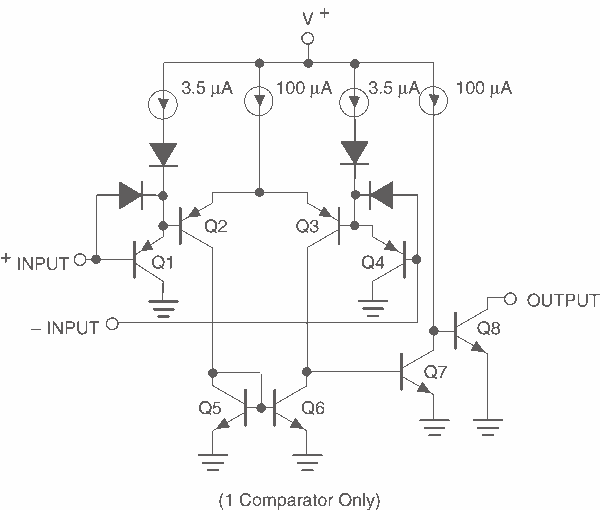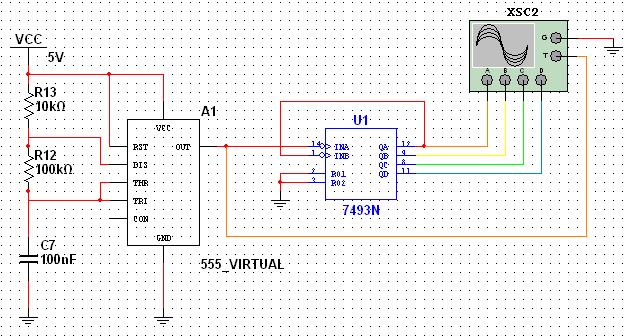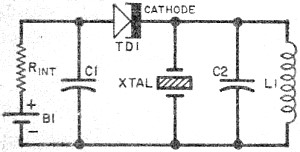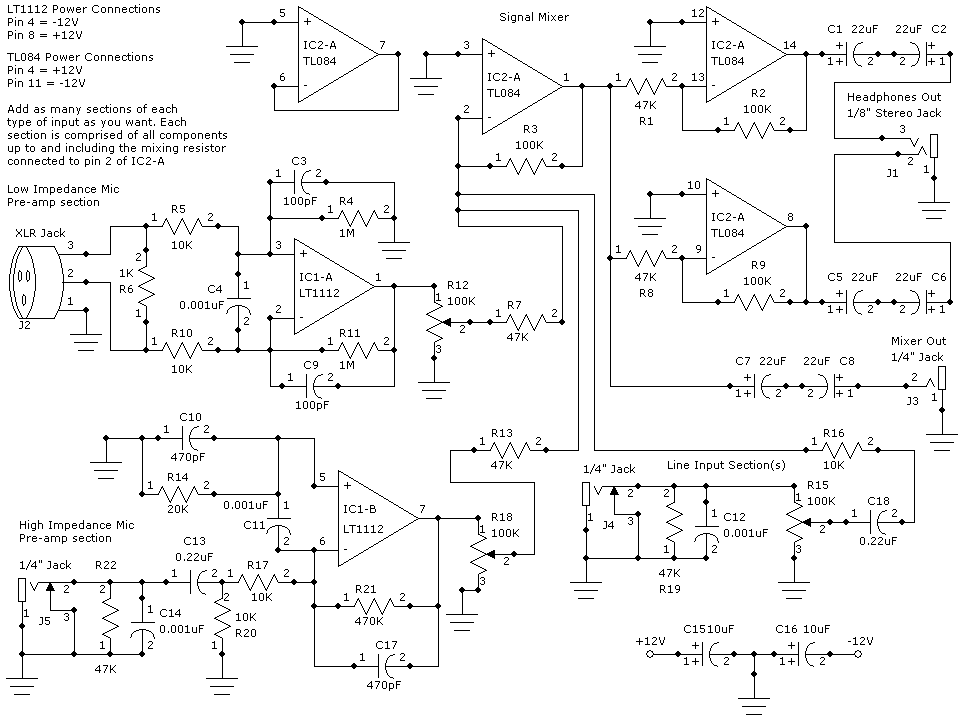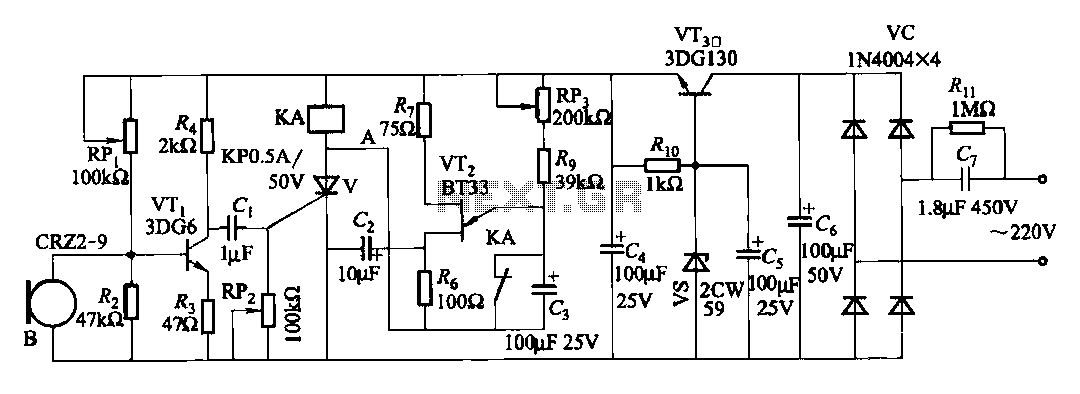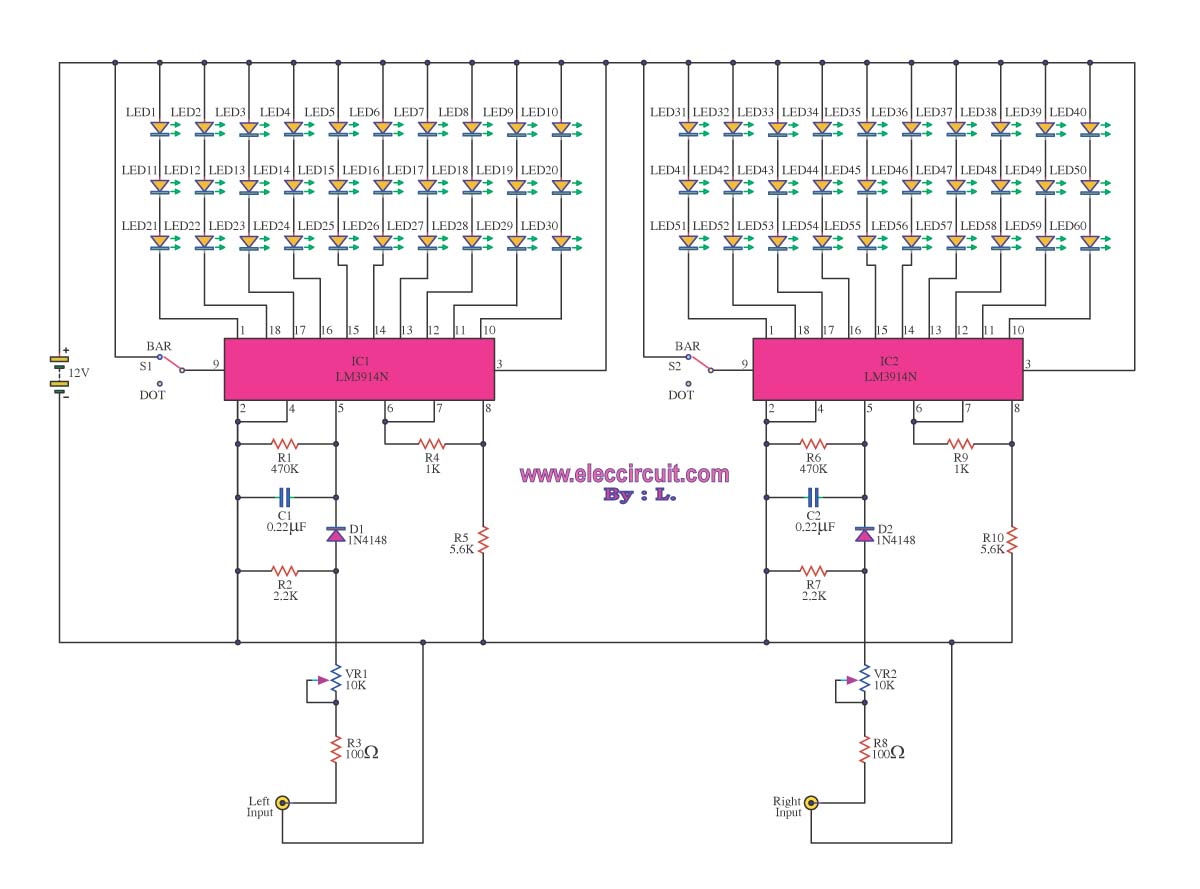
sensors circuits
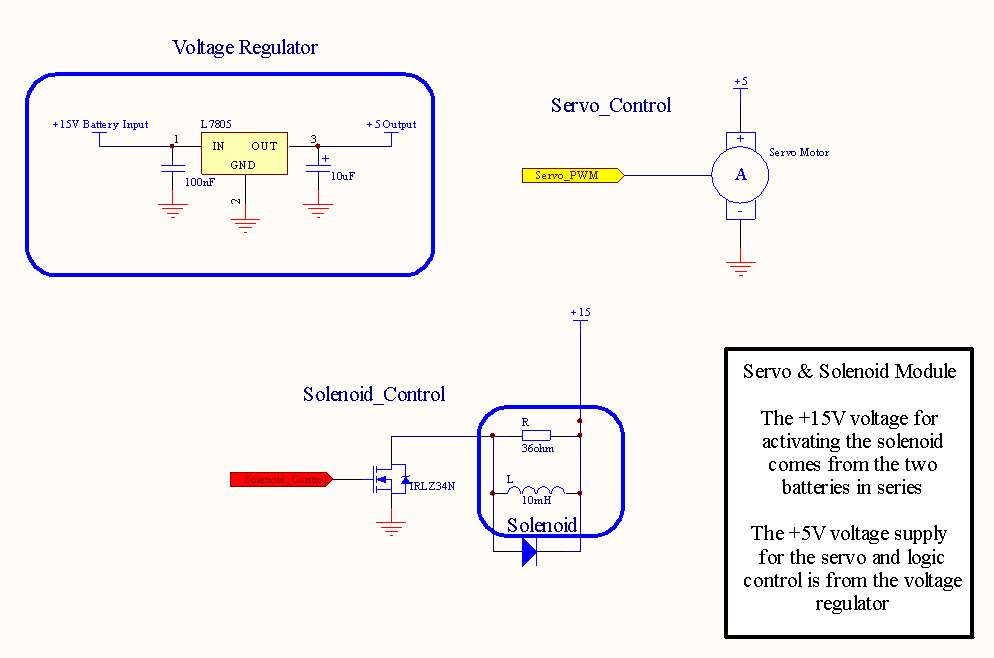
All electronic circuits were initially built on breadboards. Once the circuits were operational, they were soldered onto perfboards to create a more durable system. A power board was designed to stack two batteries in series, providing access to a 14.4V line and a 7.2V line. High power electronics were separated from logic circuits to minimize noise interference. An emergency stop feature was implemented to cut power to the actuators while keeping the logic circuits operational. This configuration allows for the motors to be halted in case of a malfunction while maintaining logic circuit functionality. The board consists of four main components. The first is a voltage regulating circuit, which employs a low dropout regulator to power the board from a single battery. This design ensures that the logic circuit remains powered even if the battery voltage drops to 5.5V. The second component is a flash sensor, utilizing a comparator connected to an NPN phototransistor to detect camera flashes. The third component is a tape sensor, which employs an IR emitter paired with an IR phototransistor to identify when the system is on a specific color of tape. The output of this circuit connects to an A/D port, and the readings are calibrated to determine the tape color. The final component is a ball color sensor, which uses an IR emitter and detector to ascertain whether a black ball, a yellow ball, or no ball is present. A high-power H-Bridge controls the launcher motor using PWM in drive-brake mode. The launcher is voltage regulated to ensure its speed remains unaffected by battery voltage fluctuations. The voltage regulator experiences high current for short durations; however, once the wheel is in motion, the current draw decreases significantly. Consequently, the average power dissipation is low, allowing for the use of a cost-effective voltage regulator (L7805) instead of a high-current variant.
The electronic circuit described operates effectively within a robust framework designed for reliability and efficiency. The initial use of breadboards allows for rapid prototyping and testing of circuit functionalities, while the transition to perfboards solidifies the design for practical applications. The power board configuration, which stacks batteries, ensures that the system can operate on two distinct voltage levels, enhancing versatility in powering various components.
The separation of high power electronics from logic circuits is a critical design choice that mitigates the risk of electromagnetic interference, which could lead to erratic behavior in sensitive logic components. The integration of an emergency stop feature is a vital safety measure, providing a fail-safe mechanism that ensures the system can be quickly deactivated without compromising the operational state of the logic circuits.
The voltage regulation circuit is particularly noteworthy, as it utilizes a low dropout regulator to maintain functionality even under low battery conditions. This feature is essential for applications where battery life is a concern, ensuring that the logic circuits receive stable power until the battery is critically low. The flash sensor and tape sensor demonstrate the circuit's ability to interact with environmental stimuli, allowing for dynamic responses based on visual cues.
The ball color sensor enhances the system's capability to differentiate between various objects, enabling more complex interactions and operations. The high-power H-Bridge is an efficient solution for motor control, allowing for precise speed regulation and direction changes through PWM. The design's consideration of average power dissipation and the choice of a cost-effective voltage regulator reflect a balanced approach to performance and cost-efficiency, making this circuit suitable for a range of applications in robotics and automation.All of our electronic circuits were originally constructed on breadboards. Once the circuits were working, we soldered them on perfboards to give us a more robust system. We created a power board which stacked two batteries in series. This gave us access to a 14. 4V line and a 7. 2V line. We separated our high power electronics from all of our logic circuits to decrease the potential for noise. We also implemented an emergency-stop which cut power to the actuators but left the logic circuits running. This allowed us to stop all of our motors if something went wrong but keep the logic circuits running.
This board contains 4 primary elements. The first is the voltage regulating circuit. We used a low dropout regulator to power this board from a single battery. This means that the logic circuit could be powered even if the battery voltage dropped as low as 5. 5V. The second element is the flash sensor. We used a comparator connected to an NPN phototransistor to detect a camera flash. The third element is the tape sensor. We used an IR emitter coupled with an IR phototransistor to detect when we were on a particular color of tape. The output of the circuit fed into an A/D port and we calibrated the reading to determine tape color.
The final element is the ball color sensor. It uses an IR emitter and detector to determine whether we obtained a black ball, a yellow ball, or no ball. We used a high power H-Bridge to control our launcher motor with PWM in drive-brake mode. We voltage regulated the launcher so that its speed would be independent of battery voltage. The voltage regulator sees a large amount of current for brief periods of time but once the wheel is spinning, the current draw is low.
Thus, the average power dissipation is low and we were able to use a cheaper voltage regulator (L7805) instead of a very high current regulator. 🔗 External reference
The electronic circuit described operates effectively within a robust framework designed for reliability and efficiency. The initial use of breadboards allows for rapid prototyping and testing of circuit functionalities, while the transition to perfboards solidifies the design for practical applications. The power board configuration, which stacks batteries, ensures that the system can operate on two distinct voltage levels, enhancing versatility in powering various components.
The separation of high power electronics from logic circuits is a critical design choice that mitigates the risk of electromagnetic interference, which could lead to erratic behavior in sensitive logic components. The integration of an emergency stop feature is a vital safety measure, providing a fail-safe mechanism that ensures the system can be quickly deactivated without compromising the operational state of the logic circuits.
The voltage regulation circuit is particularly noteworthy, as it utilizes a low dropout regulator to maintain functionality even under low battery conditions. This feature is essential for applications where battery life is a concern, ensuring that the logic circuits receive stable power until the battery is critically low. The flash sensor and tape sensor demonstrate the circuit's ability to interact with environmental stimuli, allowing for dynamic responses based on visual cues.
The ball color sensor enhances the system's capability to differentiate between various objects, enabling more complex interactions and operations. The high-power H-Bridge is an efficient solution for motor control, allowing for precise speed regulation and direction changes through PWM. The design's consideration of average power dissipation and the choice of a cost-effective voltage regulator reflect a balanced approach to performance and cost-efficiency, making this circuit suitable for a range of applications in robotics and automation.All of our electronic circuits were originally constructed on breadboards. Once the circuits were working, we soldered them on perfboards to give us a more robust system. We created a power board which stacked two batteries in series. This gave us access to a 14. 4V line and a 7. 2V line. We separated our high power electronics from all of our logic circuits to decrease the potential for noise. We also implemented an emergency-stop which cut power to the actuators but left the logic circuits running. This allowed us to stop all of our motors if something went wrong but keep the logic circuits running.
This board contains 4 primary elements. The first is the voltage regulating circuit. We used a low dropout regulator to power this board from a single battery. This means that the logic circuit could be powered even if the battery voltage dropped as low as 5. 5V. The second element is the flash sensor. We used a comparator connected to an NPN phototransistor to detect a camera flash. The third element is the tape sensor. We used an IR emitter coupled with an IR phototransistor to detect when we were on a particular color of tape. The output of the circuit fed into an A/D port and we calibrated the reading to determine tape color.
The final element is the ball color sensor. It uses an IR emitter and detector to determine whether we obtained a black ball, a yellow ball, or no ball. We used a high power H-Bridge to control our launcher motor with PWM in drive-brake mode. We voltage regulated the launcher so that its speed would be independent of battery voltage. The voltage regulator sees a large amount of current for brief periods of time but once the wheel is spinning, the current draw is low.
Thus, the average power dissipation is low and we were able to use a cheaper voltage regulator (L7805) instead of a very high current regulator. 🔗 External reference
